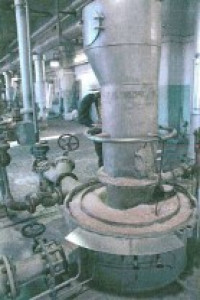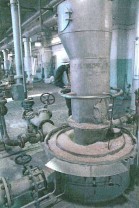In a cellulose manufacturing plant, sulphur dioxide leaked following a loss of air tightness of a cover of a reactor. Cellulose is manufactured in a process where wood chips are heated in a vessel containing sulphuric acid and sulphur dioxide. At the time of the accident, the reactor was loaded with wood chips and acid. The production then entered the heating phase where there is a rise in temperature. During this process, the cover is kept closed by the water maintained under pressure by an electrical pump. Air tightness of the system is achieved once a certain pressure level is attained.
There was a power failure impacting the entire site during the phase of rise in temperature. The electric pumps maintaining the water under pressure were no longer operational. This led to an estimated release of 100 Kg of SO2. The emission was detected by a car driver who informed the fire department and the police.
The consequences of the accident were reduced by the fact that a sufficient pressure level was attained to maintain the sealing device in place and a technician had the reflex of switching over the facilities to the self-sealing phase. The investigations that ensued after the accident revealed a lack of awareness on the vulnerability of electrical facilities especially with regard to the ripple effect of failure.
The remedial action taken by the operator included modifications in the reactor sealing system by replacing water with nitrogen to maintain the pressure, modification in the SO2 alarm system. The site’s safety management system was modified to take into account the lessons learnt from this incident.
Download the detailed report in .pdf format (237 Kb)





